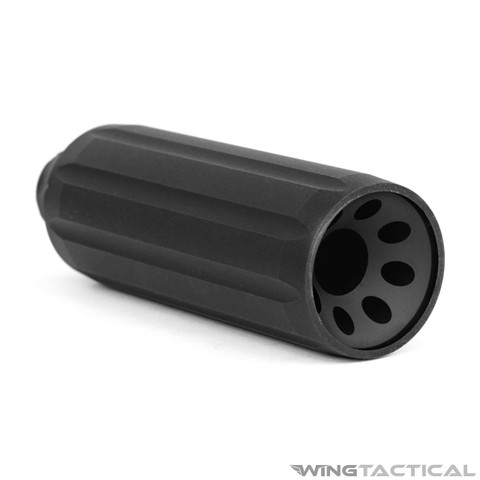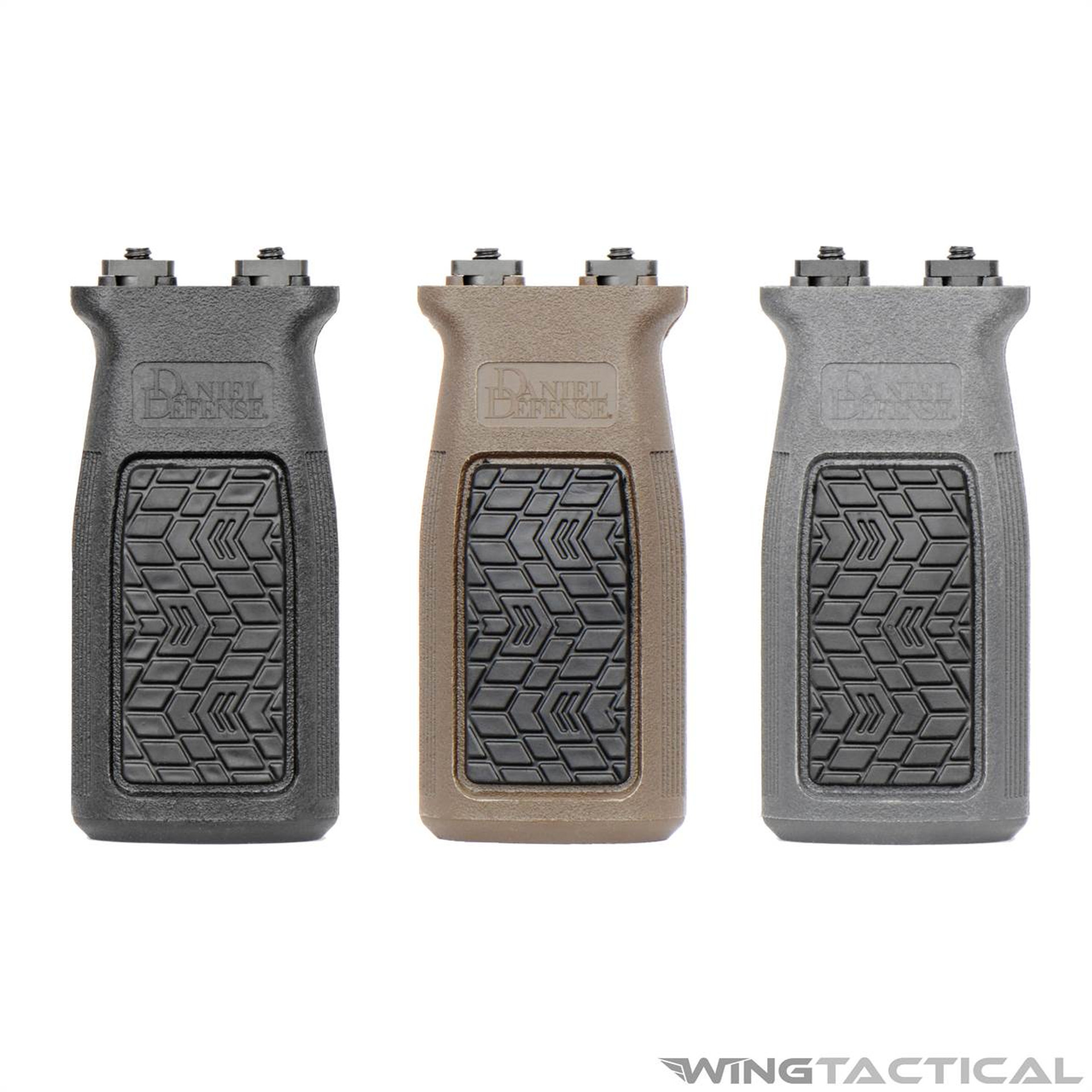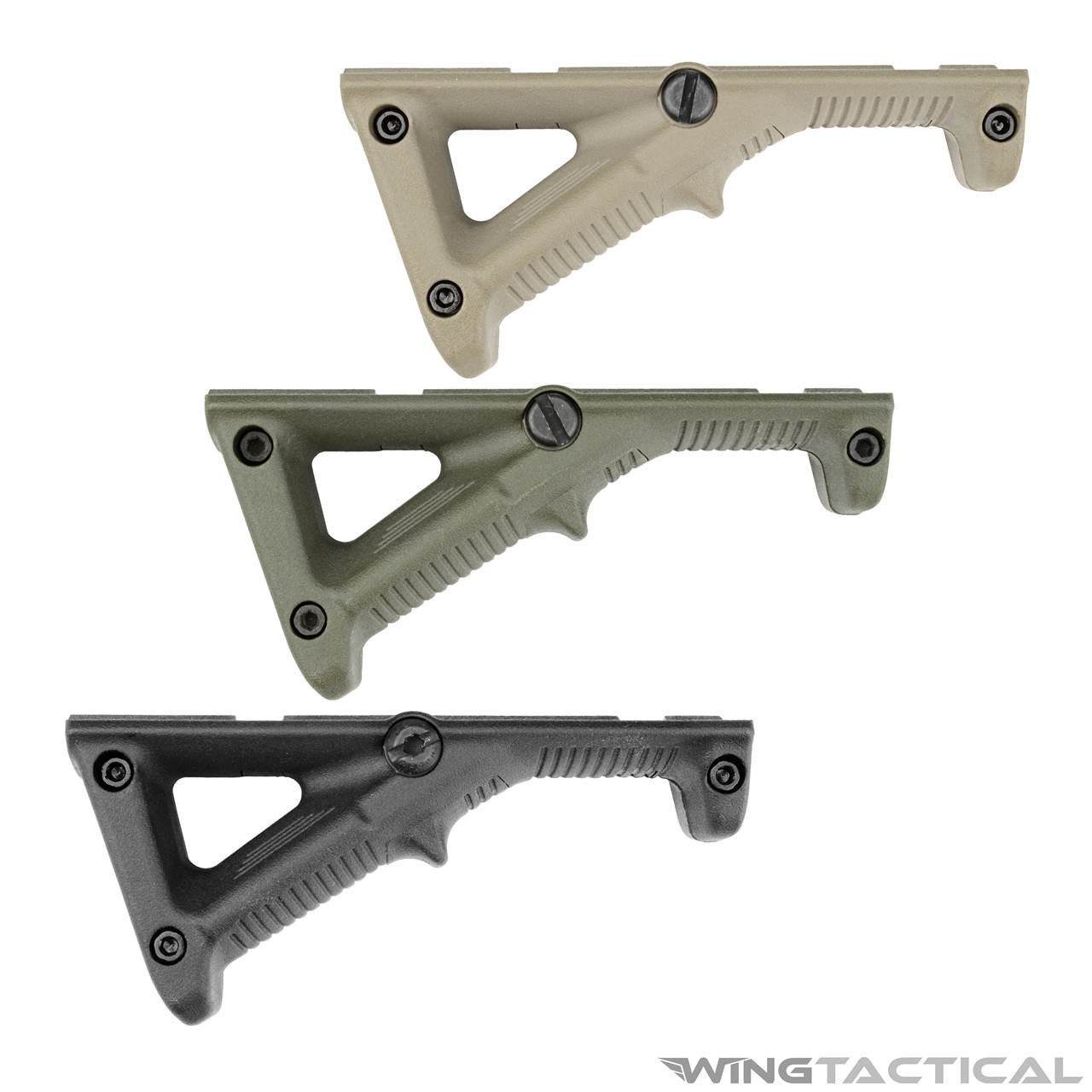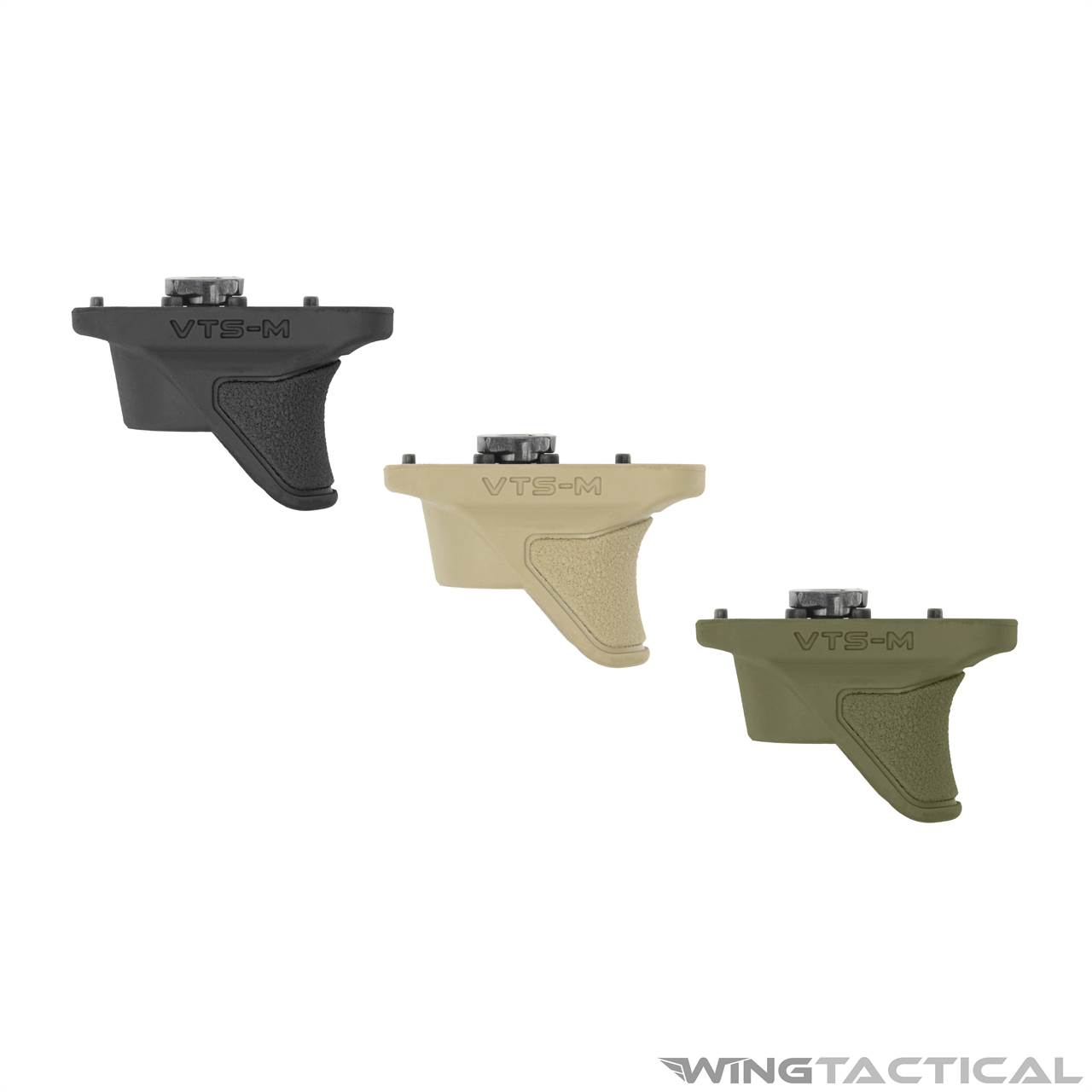Part of the joy of owning an AR-15 is the ability to customize your firearm to improve its performance, make it more comfortable, or just make it look cool. Installing a vertical or angled foregrip (or handstop) can give you more control when firing and protect your hand from the heat generated by your shots.
To find the best foregrip for your AR-15, you'll need to consider your preferences and the specs of your firearm, including the gun's weight and length. Browse our extensive collection of available foregrips to find the perfect addition for your AR-15.
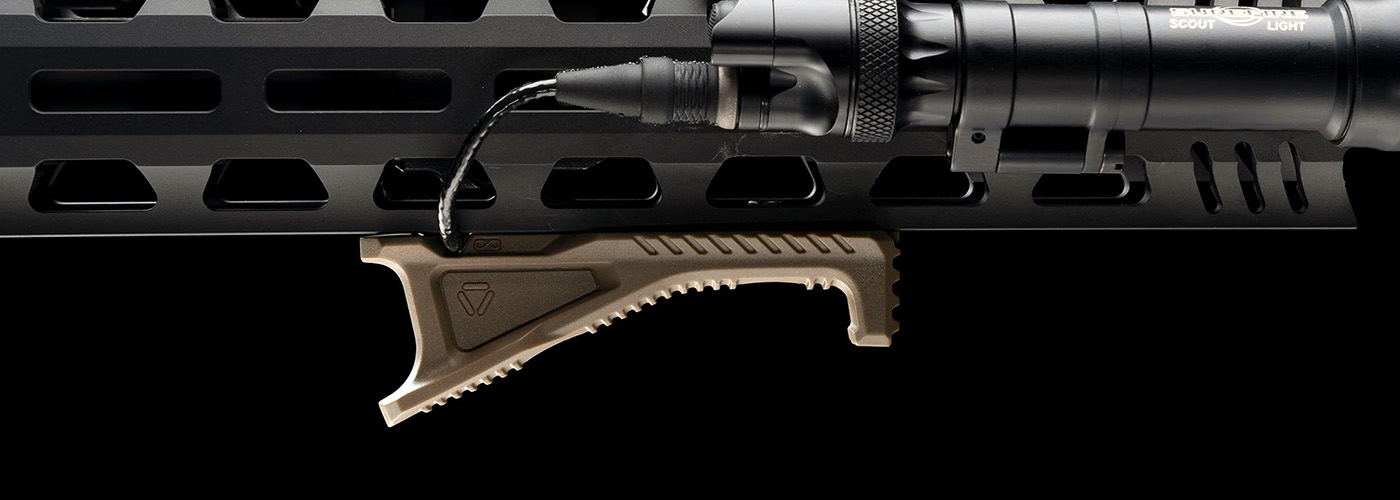
Foregrips for AR-15: Stability and Aesthetic Appeal
A high-quality foregrip is one of the most useful accessories you can add to your AR-15, giving you increased control, less perceived recoil, and improved comfort when firing. These handy attachments are generally divided into three main categories depending on their shape and use: vertical foregrips, angled foregrips, and handstops.
Your foregrip of choice should depend on your preferences and a few other factors. However, you should familiarize yourself with the laws in your state regarding which accessories you can legally add to your AR-15 before purchasing a foregrip.
In some states, vertical grips cannot be added to an AR-15 pistol. You might consider an angled foregrip or handstop for your firearm instead to ensure you comply with local restrictions.
At Wing Tactical, we're dedicated to stocking the best-quality AR-15 accessories from the biggest names in the industry. Our selection of AR-15 foregrips includes a wide variety of options from the brands we trust the most, like Tyrant Designs, Strike Industries, and Magpul.
Vertical Foregrips
These grips are positioned at a 90-degree angle from your firearm's handguard and generally held with a "C" grip around the handle. They maintain pressure on the handguard, which allows more control over any directional recoil you may experience during firing.
Angled Foregrips
These ergonomically designed grips provide a contact surface that is less than 90 degrees, bringing the user's hand more in line with the bore of the rifle for smoother positioning. The exact angle varies depending on the style and manufacturer.
Handstops
As the smallest AR-15 foregrips, handstops offer users tactile feedback for where to put their hands without the added bulk of the other options. These grips allow the user to lock their hand in place by pushing against the stop with either a forward or reverse grip.
Wing Tactical: Your Source for AR-15 Foregrips and More
At Wing Tactical, we only sell products that we would use ourselves. We trust each of our manufacturers to produce top-quality products, and we've subjected many to rigorous testing to ensure they're up to our incredibly high standards.
You can shop with confidence knowing that each foregrip in our inventory is picked and packed by our expert team and backed by our personal stamp of approval — and our satisfaction guarantee.
Browse our wide selection of high-quality foregrips and place your order online to get your upgrades fast. Feel free to contact our team with any questions.
Frequently Asked Questions
What are the benefits of installing a foregrip on your AR?
Many marksmen add a foregrip or handguard to achieve additional stability during firing. Using a stable firing stance can make or break your accuracy, performance, and shooting experience, and foregrips can supplement efforts to perfect your stability.
What rail systems are compatible with these foregrips?
Our collection of top-quality foregrips includes options compatible with almost any AR-15 rail system, including M-LOK, KeyMod, and Picatinny setups. The listings for each foregrip will tell you which rail system the selected accessory is compatible with so you can be sure you know what to expect.
If you fall in love with a foregrip that is not compatible with your current system, you can install an adapter that will accommodate cross-platform connections. For example, our Seekins Precision KeyMod rail section adds a section of Picatinny rail base to your firearm, allowing you to attach a foregrip designed for use with Picatinny rails.
Should you choose an angled foregrip or a vertical one?
The choice between a vertical and angled foregrip typically comes down to personal preference. If you’re not sure which style will work best for you, poll fellow gun owners or ask to try their grips the next time you head to the range.
What tools do I need to install a new foregrip?
Installing a new foregrip on your AR-15 is incredibly easy. While the process varies based on which foregrip you're installing on which rail system, most installations only require a long Allen key.
Should you use a handstop or a foregrip for your AR-15?
Like the choice between angled and vertical foregrips, personal preference should dictate which grip product you choose to mount to the bottom of your handguard — if you decide to add one at all.
Handstops are relatively lower-profile. If you’re tight on space or your rifle barely fits in your case, a handguard may create fewer storage challenges. If you’re looking for ultimate shooting stability at the bench (or in a hunting blind), a foregrip that doubles as a monopod might be the best choice for your shooting application.
Which factors should you consider before choosing a grip product?
Before completing your purchase, consider how all of the following elements of your chosen product will impact the rest of your build and your shooting experience:
- Grip material
- Finish and texture
- Color
- Length
- Angle
Are all foregrip and handstop products compatible with every AR-15?
The most important compatibility factor to consider when choosing a handstop or foregrip is your rifle’s rail system. As long as the part you’ve chosen will connect to your handguard’s rail, you’re likely good to go.






